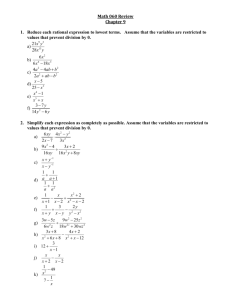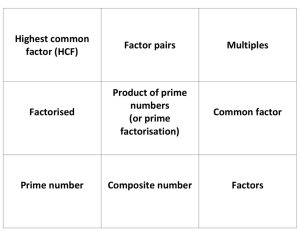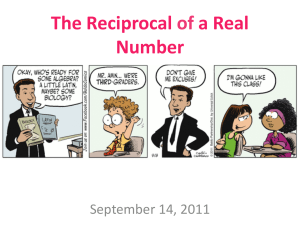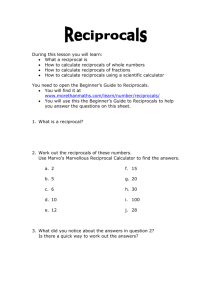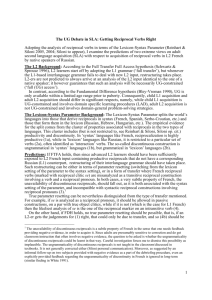Investigating Factors
advertisement
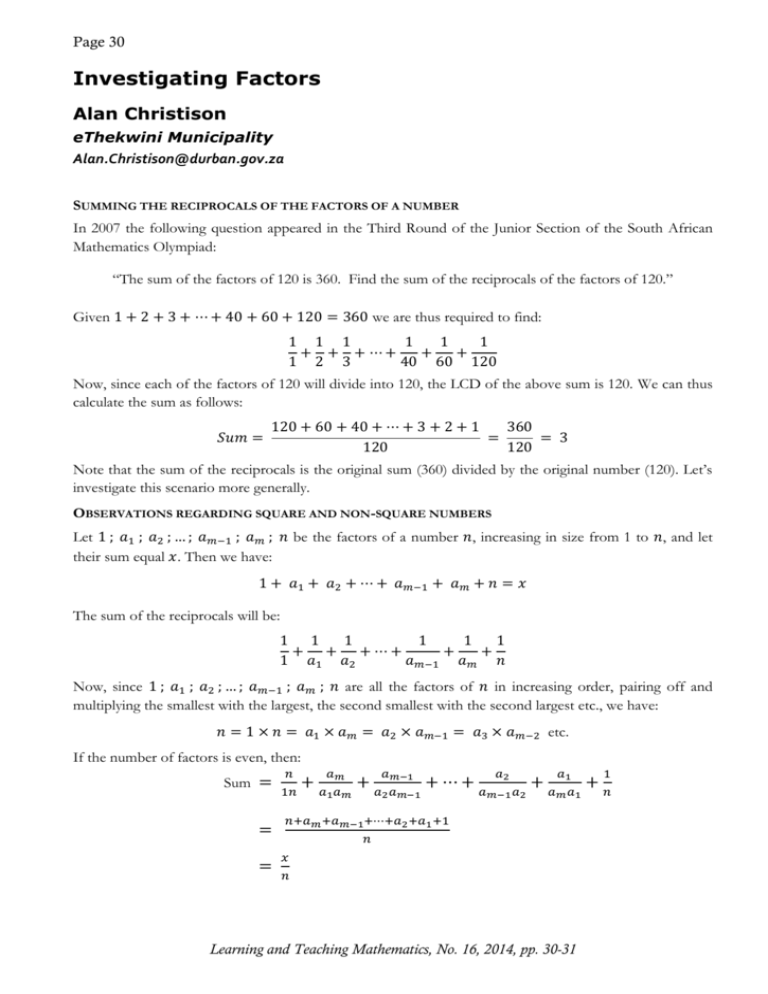
Page 30 Investigating Factors Alan Christison eThekwini Municipality Alan.Christison@durban.gov.za SUMMING THE RECIPROCALS OF THE FACTORS OF A NUMBER In 2007 the following question appeared in the Third Round of the Junior Section of the South African Mathematics Olympiad: “The sum of the factors of 120 is 360. Find the sum of the reciprocals of the factors of 120.” Given we are thus required to find: Now, since each of the factors of 120 will divide into 120, the LCD of the above sum is 120. We can thus calculate the sum as follows: Note that the sum of the reciprocals is the original sum (360) divided by the original number (120). Let’s investigate this scenario more generally. OBSERVATIONS REGARDING SQUARE AND NON-SQUARE NUMBERS Let their sum equal . Then we have: be the factors of a number , increasing in size from 1 to , and let The sum of the reciprocals will be: Now, since are all the factors of in increasing order, pairing off and multiplying the smallest with the largest, the second smallest with the second largest etc., we have: etc. If the number of factors is even, then: Sum Learning and Teaching Mathematics, No. 16, 2014, pp. 30-31 Page 31 What would happen if there were an odd number of factors? After pairing off the factors, smallest with largest etc. as previously done, then it’s clear that the middle factor will be left unpaired. Let this middle factor be . The sum of the reciprocals will thus be: We thus have, for an odd number of factors: Sum This proves that in general if the sum of the factors of a given number, , equals reciprocals of the factors of , then the sum of the is given by the quotient . From the above it should also be clear that factors then it must be a perfect square. showing that if a number has an odd number of FURTHER OBSERVATIONS In LTM No. 3 of 2006 there appears an article titled “HCF, LCM and the number of factors” (Fresen, Fresen & Heidema, 2006). In this article the authors proved, using the fact that a natural number can always be expressed as a product of its prime factors, that for a number expressed as a product of its prime factors, that is , the total number of factors of is given by: Now, given that , in order for to be a perfect square, all of must be even, thus must be confirming that a perfect square must have an odd number of factors. Conversely, if is not a perfect square then one or more of must be odd, making one or more of even, thus making the product even and thereby confirming that a number which is not a perfect square has an even number of factors. By way of example, consider 36 which is a perfect square. 36 has 9 factors (1, 2, 3, 4, 6, 9, 12, 18 and 36) and can be prime factorised as . Using the formula to calculate the number of factors gives , which as expected is odd. Now consider 120 which is not a perfect square. 120 has 16 factors (1, 2, 3, 4, 5, 6, 8, 10, 12, 15, 20, 24, 30, 40, 60 and 120) and can be prime factorised as . The number of factors is , which is indeed even. REFERENCES Fresen, D., Fresen, J., & Heidema, J. (2006). HCF, LCM and the number of factors. Learning and Teaching Mathematics, 3, 16-17. Learning and Teaching Mathematics, No. 16, 2014, pp. 30-31




